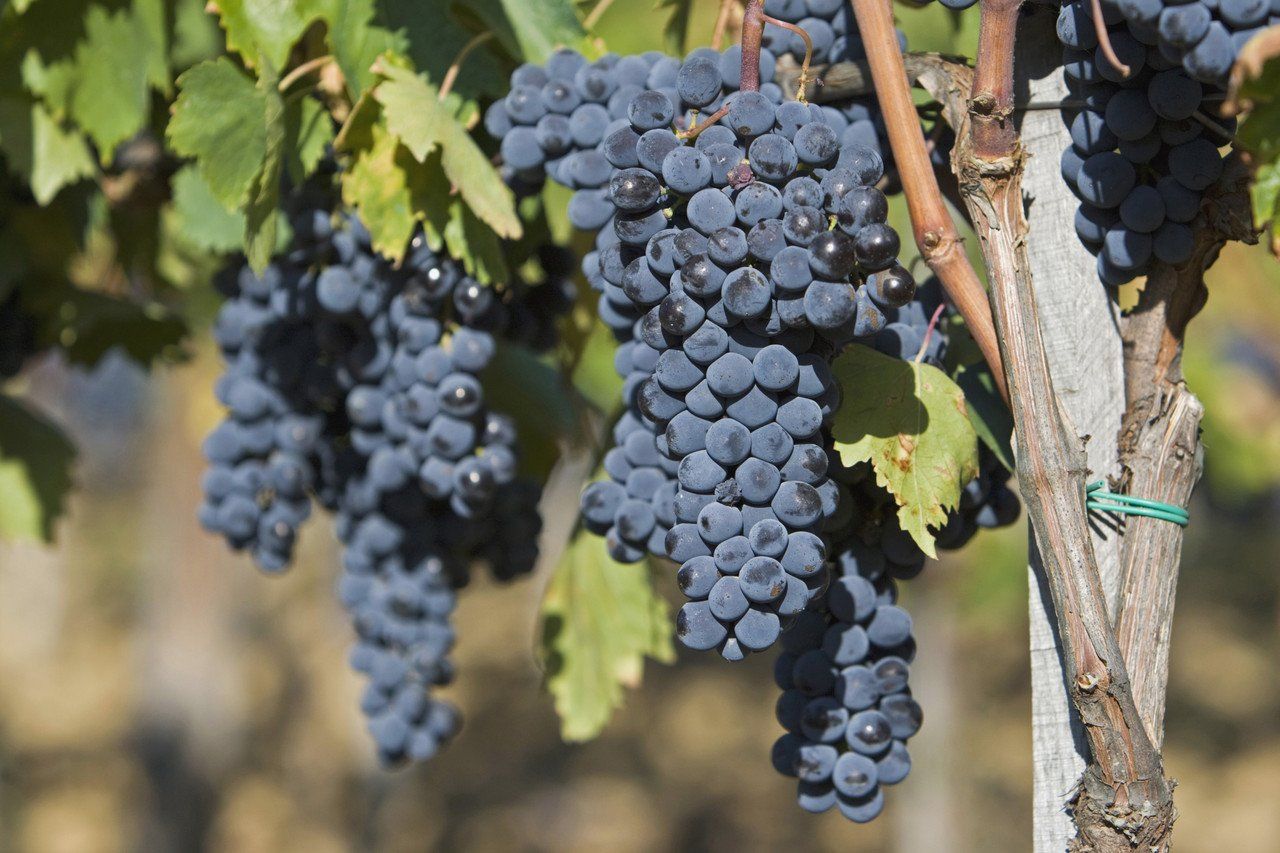Types of Wine Grapes: Guide to 20 Essential Varieties
Types of Wine Grapes: Guide to 20 Essential Varieties
Staring at a wine list can feel like reading another language: Cabernet Sauvignon jostles with Chablis, Garnacha with Rioja, Chardonnay with Meursault. What’s a grape, what’s a place, and which bottle will actually taste how you expect? Although more than 1,300 wine-making grapes exist, just twenty classics dominate UK shelves. Mastering them unlocks 80 % of everyday drinking confidence—whether you’re ordering a glass, choosing a gift, or stocking the rack for Sunday lunch.
First, a quick decoder. A grape variety is the fruit itself—Pinot Noir, for example—whereas a style or appellation, such as Chablis, describes the region and rules that shape that grape. This guide groups the essential grapes into reds and whites, with bite-size tasting notes, key regions, food matches, ageing pointers and common label synonyms. Every variety appears on the shelves of specialists like Suffolk-based Mosse & Mosse, so you can put the knowledge straight into your basket.
1. Cabernet Sauvignon (Red)
Cabernet Sauvignon is the world’s benchmark red: thick-skinned berries, naturally high tannin and acidity, and a black-currant signature that survives oak, age and geography.
Snapshot & Origins
A spontaneous 17th-century crossing of Cabernet Franc × Sauvignon Blanc in Bordeaux; nicknamed “Cab Sauv.” Today it anchors everything from Grand Cru classés to supermarket blends.
Flavour Profile
Full-bodied; cassis, cedar, mint or green pepper when young, evolving into tobacco, leather and cigar box with age.
Where It Thrives
| Old World (cooler) | New World (warmer) |
|---|---|
| Médoc & Pauillac | Napa Valley |
| Margaux | Coonawarra |
| Haut-Médoc blends | Maipo & Stellenbosch |
Perfect Pairings
Rib-eye steak, Sunday roast beef or mature Cheddar—the grape’s firm tannins soften against protein and fat.
2. Merlot (Red)
Merlot is Cabernet’s softer sibling, prized for juicy fruit and supple texture that makes blends and solo bottlings instantly approachable.
Snapshot & Origins
Named after the blackbird (“merle”); early-ripening Bordeaux native, now the world’s second most-planted red.
Flavour Profile
Medium body, plush tannin; plum, blackberry, chocolate, with herbal hints in cooler sites.
Where It Thrives
Right Bank clays, Washington State, Chile’s Colchagua, coastal Tuscany.
Perfect Pairings
Mushroom risotto, meat-lovers pizza, Christmas turkey.
3. Pinot Noir (Red)
Pinot Noir charms with fragrance and silkiness yet punishes growers; nail the vineyard and magic happens.
Snapshot & Origins
Burgundian classic; thin-skinned, early budding; known as Spätburgunder or Blauburgunder.
Flavour Profile
Light to medium body, low tannin; red cherry, strawberry, violet and forest floor, ageing into truffle and game.
Where It Thrives
Benchmarked in Côte d’Or; thrives in Willamette, Central Otago, Germany’s Ahr, and Champagne for sparkling.
Perfect Pairings
Duck breast, grilled salmon, mushroom dishes; serve slightly chilled (≈14 °C).
4. Syrah / Shiraz (Red)
One grape, two names: Syrah in France, Shiraz in Australia and most New-World labels.
Snapshot & Origins
Rhône-born, documented since the 18th century; rescued from decline by Australian pioneers.
Flavour Profile
Full-bodied with blackberry, black pepper and smoked meat; hot climates add jammy plum and liquorice.
Where It Thrives
Key terroirs: Hermitage, Côte-Rôtie, Barossa, McLaren Vale, Stellenbosch, Aragón.
Perfect Pairings
Barbecued ribs, venison stew or pepper-crusted steak echo the grape’s signature spice.
5. Malbec (Red)
Malbec is Argentina’s inky flagship, yet its first home was shadow-kissed Cahors.
Snapshot & Origins
AKA Côt; taken to Mendoza in 1850s by agronomist Michel Pouget.
Flavour Profile
Opaque purple; black plum, blueberry, cocoa, violet; medium-full body, velvety tannins.
Where It Thrives
Key sites: Uco Valley, Luján de Cuyo, Cahors, Patagonia and Languedoc.
Perfect Pairings
Matches chargrilled steak, blue cheese and smoky veggie chilli.
6. Tempranillo (Red)
Snapshot & Origins
Spain’s hallmark red, Tempranillo ripens early—hence ‘temprano’—and anchors Rioja and Ribera blends.
Flavour Profile
Medium-to-full body, moderate tannin; fresh strawberry, dried fig, clove, tobacco and vanilla from American oak.
Where It Thrives
Rioja Alavesa, Ribera del Duero; Toro (Tinta de Toro) and Douro (Tinta Roriz).
Perfect Pairings
Tapas boards, rosemary-roast lamb, Manchego or a hearty bean stew—all echo the grape’s savoury edge.
7. Grenache / Garnacha (Red)
Snapshot & Origins
Mediterranean mainstay, Spanish-born, thrives in hot, windy sites; late-ripening berries deliver high sugar and alcohol.
Flavour Profile
Red raspberry, candied strawberry, white pepper, dried rosemary and thyme (‘garrigue’); low tannin, generous warmth.
Where It Thrives
Southern Rhône (Châteauneuf-du-Pape), Priorat, Navarra, McLaren Vale, Sardinia (Cannonau).
Perfect Pairings
Ratatouille, barbecued veg, slow-roast pork shoulder; moderate tannin loves spice rubs.
8. Nebbiolo (Red)
Nebbiolo pairs pale ruby hues with muscular tannins—Italy’s iron fist in silk gloves. Lovers of long-aged reds prize its haunting perfume and longevity.
Snapshot & Origins
Named for foggy (“nebbia”) harvests, the grape emerged around Alba circa 13th-century.
Flavour Profile
Tar and roses headline; sour cherry, high acid, towering tannin ageing to truffle and leather.
Where It Thrives
Barolo, Barbaresco, Valtellina (Chiavennasca) and Mexico’s Valle de Guadalupe.
Perfect Pairings
Decant for osso buco, truffle pasta or aged Parmigiano-Reggiano.
9. Sangiovese (Red)
Snapshot & Origins
Italy’s most planted red, name means ‘blood of Jupiter’; documented 1500s, backbone of Chianti, Brunello and Vino Nobile.
Flavour Profile
Bright acidity, firm tannin; sour cherry, red plum, tomato leaf, dried oregano; oak adds coffee spice.
Where It Thrives
Classic in Tuscany’s hills, Emilia-Romagna, coastal Maremma, plus outposts in California’s Central Coast and Mendoza.
Perfect Pairings
Match with tomato-based pasta Bolognese, porchetta, hard Pecorino or a Margherita.
10. Zinfandel / Primitivo (Red)
Snapshot & Origins
A Croatian grape (Tribidrag) taken to California in the 1840s Gold Rush and known in Puglia as Primitivo.
Flavour Profile
Rich, jammy blackberry and raspberry, black pepper, sweet baking spice; heat can push alcohol past 15 % ABV.
Where It Thrives
Dry Creek, Paso Robles, Puglia’s Gioia del Colle, plus a modest Croatian comeback.
Perfect Pairings
Sticky barbecue ribs, pepperoni pizza, dark chocolate.
11. Chardonnay (White)
Chardonnay is the white wine world’s chameleon—straightforward in the vineyard yet endlessly shape-shifting in the winery. That malleability explains why one grape can produce steely Chablis, rich Burgundy, and creamy Napa Reserve all at once.
Snapshot & Origins
Burgundy native, first recorded in the village of the same name; nicknamed the “winemaker’s grape.” Known as Morillon in Austria and sometimes Beaunois in old French texts.
Flavour Profile
Cool climate: green apple, lemon peel, wet stone. Warm climate or barrel-fermented: pineapple, mango, vanilla, buttered brioche. Naturally medium acidity, medium-full body.
Where It Thrives
Benchmark regions: Chablis and Côte de Beaune (France); Champagne for sparkling bases; Yarra Valley (Aus); Sonoma Coast (USA). High-latitude English plantings now turning heads, too.
Perfect Pairings
Versatile: roast chicken, creamy tagliatelle, lobster with tarragon butter, or a classic Friday night fish and chips when lightly oaked.
12. Sauvignon Blanc (White)
Snapshot & Origins
Loire-born and a genetic parent of Cabernet Sauvignon, Sauvignon Blanc’s bracing style became world-famous after 1980s Marlborough releases.
Flavour Profile
Zip-sharp acidity; gooseberry, grapefruit and cut grass. Marlborough adds passionfruit, while Pouilly-Fumé shows flinty smoke.
Where It Thrives
Sancerre, Pouilly-Fumé, Marlborough, Chile’s Casablanca, South Africa’s Elgin and oaked Napa “Fumé Blanc”.
Perfect Pairings
Goat’s cheese, asparagus, sushi or fish tacos—the acidity slices through creamy or fried dishes.
13. Riesling (White)
Riesling’s rapier acidity proves white wine can be thrilling and age-worthy.
Snapshot & Origins
Germany’s 1435-recorded star; slate slopes yield styles from bone-dry ‘trocken’ to ice-sweet Eiswein.
Flavour Profile
High acidity; lime, apple, jasmine early, turning petrol, honey and toast with age.
Where It Thrives
Key regions: Mosel, Rheingau, Alsace, Clare Valley, Finger Lakes.
Perfect Pairings
Off-dry tames Thai heat; dry cuts through roast pork and tangy goat’s cheese.
14. Pinot Grigio / Pinot Gris (White)
Two names, one grey-skinned mutation of Pinot Noir, offering twin personalities you’ll meet on almost every wine list.
Snapshot & Origins
Italian wineries label it Grigio; Alsace and Oregon prefer Gris.
Flavour Profile
Grigio: light, crisp, pear, lemon. Gris: fuller, peach, honey, spice.
Where It Thrives
Veneto, Alto Adige, Alsace, Oregon—plus English chalk for zesty summer sippers.
Perfect Pairings
Seafood linguine, summer salads, brie; serve well-chilled for maximum zip.
15. Chenin Blanc (White)
Chenin Blanc is a shape-shifting white capable of every style.
Snapshot & Origins
Loire native, taken to South Africa by 17th-century Huguenots and dubbed “Steen”.
Flavour Profile
High acidity; green apple, quince, acacia honey; dry, sparkling or botrytised sweet.
Where It Thrives
Top sites: Vouvray, Savennières, Stellenbosch, Swartland, plus California’s Central Valley.
Perfect Pairings
Try with roast chicken, spicy sushi rolls, or creamy goat’s cheese.
16. Gewürztraminer (White)
Scented show-stopper.
Snapshot & Origins
Alpine mutation of Traminer, revived in Alsace; name means “spicy Traminer.”
Flavour Profile
Lychee, rose, ginger, Turkish delight; low acid, lush texture, slight bitter finish.
Where It Thrives
Alsace benchmark, plus Alto Adige, Pfalz, Marlborough and Gisborne.
Perfect Pairings
Great with creamy korma, Szechuan pork, or ripe Munster. Chill lightly, never ice-cold.
17. Viognier (White)
Snapshot & Origins
Nearly extinct until a 1960s Condrieu revival; low-yielding, late-ripening vine now enjoying global attention.
Flavour Profile
Full-bodied, creamy; apricot, peach, honeysuckle, ginger; oily texture, modest acidity, oak brings vanilla.
Where It Thrives
Condrieu and tiny Château-Grillet in Northern Rhône; Côte Rôtie blends; cool sites in California, Eden Valley and Languedoc.
Perfect Pairings
Roast pork with peaches, creamy Thai curry or triple-crème cheese. Serve around 10–12 °C.
18. Albariño (White)
Snapshot & Origins
Galicia’s Atlantic flagship, Albariño sports thick skins that shrug off rain.
Flavour Profile
Expect acidity, lemon zest, peach and a saline finish.
Where It Thrives
Iconic in Rías Baixas, labelled Alvarinho in Portugal’s Vinho Verde, with fans in California’s Edna Valley.
Perfect Pairings
Serve with oysters, grilled prawns or pulpo a la gallega—seafood loves its citrus snap.
19. Grüner Veltliner (White)
Snapshot & Origins
Austria’s flagship white, recorded in 19th-century records; the name translates as “green from Veltlin.”
Flavour Profile
Light to medium body; green apple, white pepper, radish and celery salt; can age into honeyed spice.
Where It Thrives
Wachau, Kamptal, Kremstal; plantings in Adelaide Hills and Oregon.
Perfect Pairings
Wiener schnitzel, spring veg or sushi with wasabi—the kick matches.
20. Moscato / Muscat Blanc à Petits Grains (White)
Snapshot & Origins
Ancient aromatic family; petite-berried Muscat Blanc is prized for perfume. Piedmont’s lightly fizzy Moscato d’Asti is today’s poster child.
Flavour Profile
Low alcohol; orange blossom, grape must, peach, honey; spritz in many bottlings.
Where It Thrives
Piedmont, Southern France, Greece (Moschato), Australia’s Murray Valley.
Perfect Pairings
Fruit tarts, brunch pastries, blue cheese, spicy Korean wings—sweetness tames heat.
Final Sip
Conquer these 20 grapes and you’ve cracked the code behind most wine lists, supermarket aisles and dinner-party conversations. Recognising the difference between, say, a bright Marlborough Sauvignon Blanc and a creamy Côte de Beaune Chardonnay lets you order with intent and match dishes without guesswork. Tannins, acidity and aroma cues start to make delicious sense.
Practical pay-off? You’ll avoid costly disappointments, spot bargains from emerging regions and cellar bottles with confidence. Keep this cheat-sheet handy when planning menus: Cabernet for steak night, Gewürztraminer for curry Friday, fizzy Moscato for brunch. With experience you’ll branch into sub-regions and blends, yet these benchmarks will stay your flavour compass.
Ready to turn theory into taste? Browse the carefully chosen range of these varieties at Mosse & Mosse and start exploring today.







